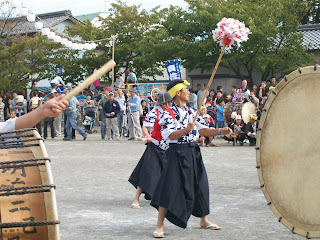Andrea, welcome aboard! It’s fun to hear from you, and I hope you’re doing well too. As for the sink/bathroom configuration, I’m pretty sure it just depends on how the house was built. But my thinking is that Japanese houses are pretty small by and large. The bath set up is usually like this: A bathtub, with an open space next to it with a shower head and a stool for rinsing off, since the practice here is to clean your body, and then get in the bath to soak, as opposed to cleaning yourself in the bath. I imagine having more than one bath per house would require a pretty large house. In my host family’s house, there’s the bath and the toilet my host parents use downstairs (the two aren’t connected, they have separate rooms, and the shower is actually connected to the laundry room which makes sense). My bedroom is upstairs so they told me the upstairs sink and toilet were mine to use.
What was your situation like in France? Now I’m curious to hear more about it.
Mom, I thought the sweets were a bit too sweet. I needed a nice bitter cup of green tea to cut the sweetness. Also the chicken wasn’t all the way raw. It had been cooked most of the way through.
Lily, I’ve been lucky so far and had great weather for all of my trips. I’ve never actually been to a spa so I can’t make that comparison, but it seems like it’s probably similar. It probably depends on the onsen if there’s places to get massages and that kind of stuff. That’d be great though, mannn. I could use a shoulder massage like nothing else in the world.
--
I feel like I’ve been doing nothing but going to festivals lately! Part of that is thanks to my class. My fieldwork research methods professor studies festivals, particularly the ways gender roles in festivals are changing. As a result, to kind of practice field work he’s invited us on a lot of field trips to festivals.
The first of these was the Imaike festival-turned-dinner-outing that I talked about before.
Two weekends ago we went to a town called Tarui, in Gifu prefecture, for the Tarui Taiko Matsuri, or Drum Festival.
The festival was held on the grounds of a local preschool in Tarui, this pretty small town. I don’t think the place itself was very well known, and it’s a pretty rural area. Other Japanese people we talked to about our trip hadn’t heard of it.
Our professor wouldn’t tell us anything about the festival before we got there. He told us anything we’d want to know we’d have to ask the people around us. Of course, that meant asking them in Japanese!
Well here’s what we managed to find out:
I’m not sure which deity this festival is for, but it’s asking for rain. The drums represent thunder and the puffy paper things people are holding that look like pompoms on sticks represent clouds. Each of those drums that the men are playing weigh, at their heaviest, 60 kg.
The performers have the drums tied to them, and carry them while drumming and doing a dance, too.
I took some videos:
 |
| Me and Tiffany, a girl in my class, by one of the drums after the festival itself ended. |
After the festival all the drums get taken back to their "homes", in shrines around the town. We got to follow one back where the people play it one more time, and then put it away for the year.
But before they put it up, they let a couple of us give it a try. Since this is a men's festival, women aren't technically supposed to touch the drums, I don't think. But they let ladies give it a try. I think I ended up in an awkward in between space as a lady in jeans and a t-shirt with short hair. They didn't offer me a chance when the guys were going and they ignored me when they let a girl try it. D:
But here's Hoan, one of the guys in my class, getting strapped onto the drum.
And picking it up and playing it.
I think it's a balance and weight distribution thing more than anything. The guys said the drum itself didn't feel that incredibly heavy.
On the way back to the train station, we realized just how in the country we were.
Some scarecrows in some rice fields! You can see pretty clearly in these pictures the way agriculture and industry butt up directly next to each other. Japan doesn't go from city to countryside the way the US does. You'll be on the train in the city for five minutes and then you'll see houses, fields, more houses, and a bunch of stores and factories and stuff. And then there will be a bunch of houses, but interspersed every few streets will be more little pockets of fields. As Shaun put it on her blog "Zoning must work differently here."
Anyway it was a nice little trip and it was fun to get out to the country a bit more. This was my first real festival, and it means I got to eat my all time favorite festival food: TAKOYAKI. Yum.














Very interesting, Shannon. Your adventures make me smile! You are pretty fancy-interspersing video in with your commentary. Now I know I can count on you to record Shaun belly dancing in the Waseda Festival! Hopefully we won't have to worry about her falling off of a dashi (or anything else for that matter!)
ReplyDelete